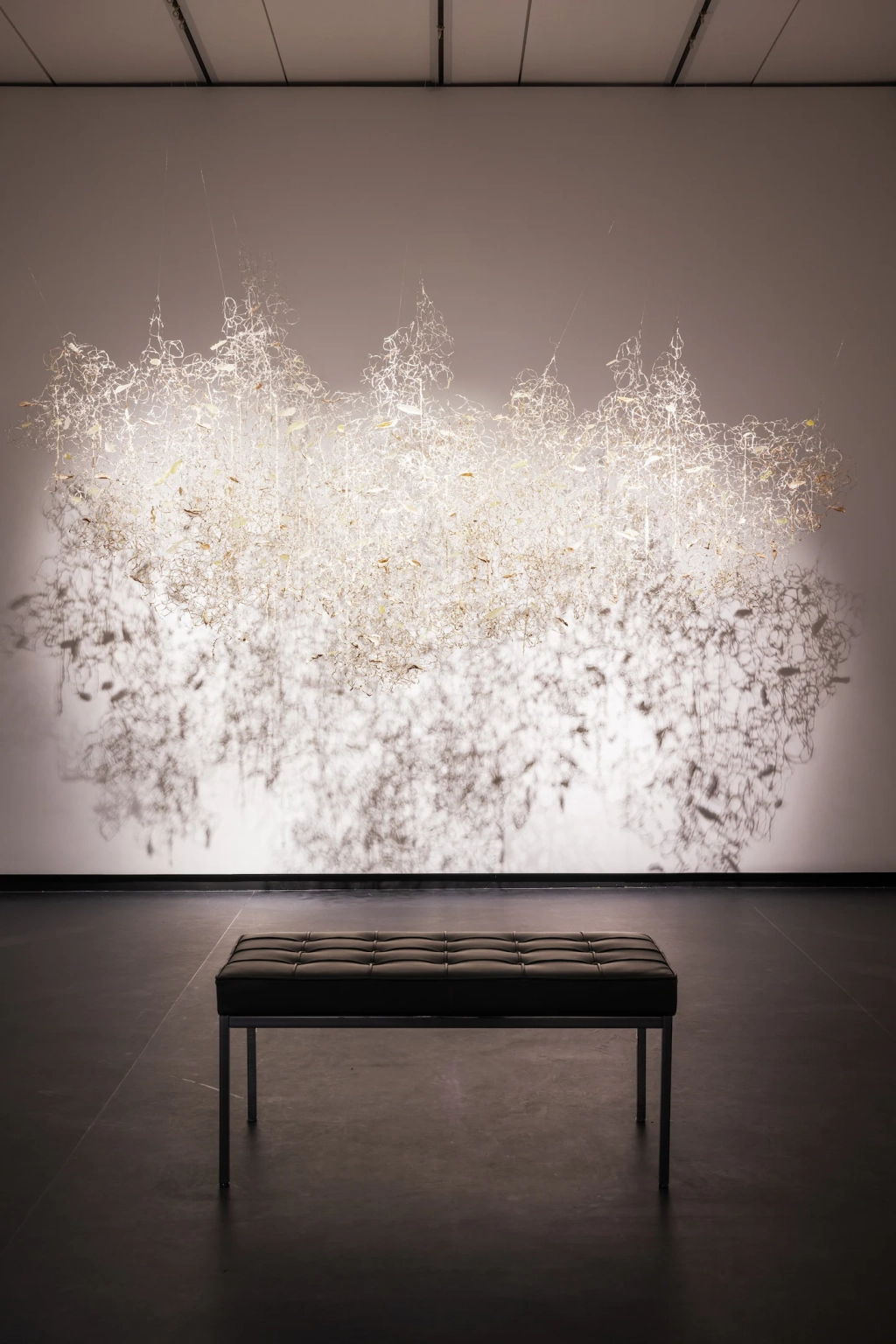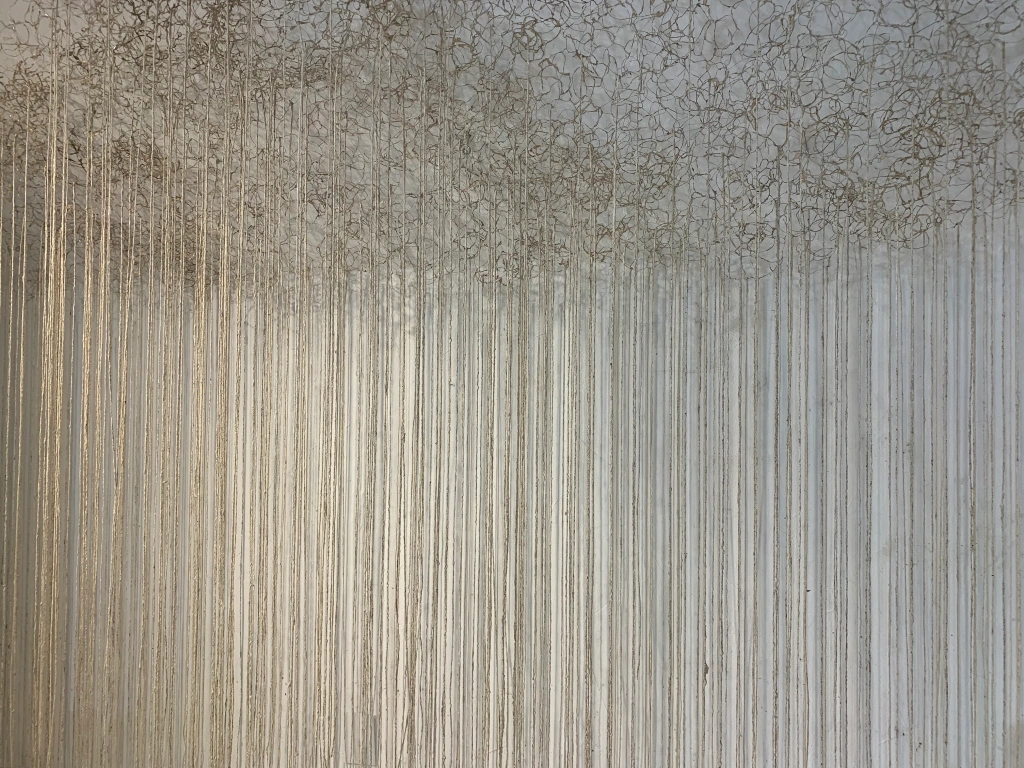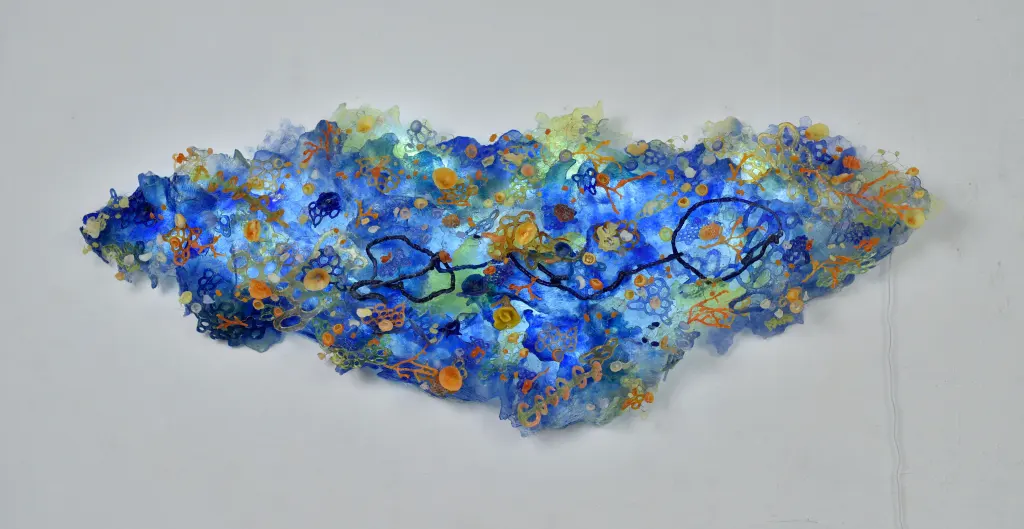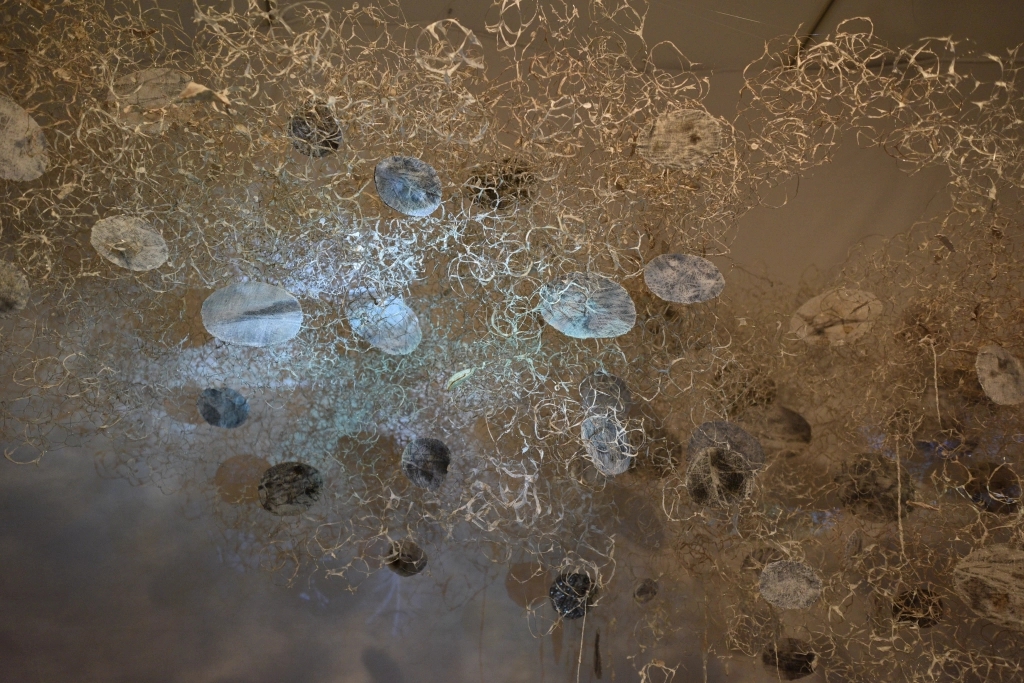

Leiden university show press release, July 11, 2019

After us the flood?
Text and Photo: Maarten Boersema
… The exposition “Humanity’s End as a New Beginning” displays images from stories about the end of days.
… “In the paintings I see over and over again signs of hope.”
Leiden
From a lying figure on the ground surrounded by red sky to a person gazing over an endless blue sea. And from a big dove to a bright yellow light in the center of a black plain. These are four of the thirty painted images of the end of the world that can now be seen at the Old University Library in Leiden on the Rapenburg. In the cabinets in the foyer thirty paintings by the Japanese-American artist Yuriko Yamaguchi (1948) have been hung since mid-July. She worked to create this exhibit together with Mineke Schipper (1938). During her career, Schipper, now Emeritus Professor of Literature at Leiden University, has collected myths about the end of days from around the world. She published a selection of these myths in 2009 in her book: After the flood. Soon afterwards she made contact with Yamaguchi and they decided to work together. Earlier this year Yamaguchi’s paintings with the Schipper’s text were shown in Japan, and later this year the exhibit will go to Washington.
A visitor to the exhibit shares her feelings out loud:”When I saw the announcement of this exhibit I was initially depressed, but in the paintings I see over and over again signs of hope. In one painting a rainbow, in another a boat with survivors or a tree that spreads life.”
The show contains two separate parts. The first contains stories and paintings over the nearly end of the world in the past. For example, this section exhibits the Biblical story of Noah and the Hindu story of Brahma and creation of death. The second part emphasizes stories about the end of days, with special attention to the Biblical Apocalypse and the stories in the Koran. The two sections are connected by a painting derived from a Japanese myth. Japanese mythology has no “end of days” story, but does contain a story where the gods prevent this disaster. According to Schipper, the stories and paintings confront us with how we must deal with the world and each other. She speaks calmly and carefully but the urgency is audible in her words:”If we don’t listen to the lessons from the gods in all these stories, then together we will bring catastrophe upon the Earth. Our gluttony will bring death and destruction upon us.” One of her favorite paintings in this exhibit shows passengers in small fishing boat in the middle of a huge devastating wave. The drawing is inspired by a myth from the Fiji islands. “In the painting I see the vulnerability of people and humanity as a whole. The waves will persist, but the small planet where we live is in the danger zone.”.
Similarities
Over the decades, Schipper work and life have shown her interest in the similarities among peoples and cultures around the world, with emphasis on stories and literature. She has written many books on these similarities, each with its own subject, for example: creation stories, proverbs about women, or stories about the world’s first inhabitants. “After years of study I have found a great number of similarities among the various ethnic groups. I don’t understand why we always emphasize the difference between peoples instead of the similarities.” To avoid the demise of the world, Schipper thinks it is necessary to recognize and utilize the similarities. “The more we recognize our similarities, the more peaceful the world will become. It’s time to shoulder our responsibility and demonstrate our common humanity.”
The last painting of the exhibit shows an image drawn from the end of the Bible, where the Last Judgment and the new versions of Earth and Heaven are discussed. The painting is abstract and resembles a rusty-brown stony terrain. “This is one of Yuriko’s favorite images. Perhaps this image will stimulate humanity to go out and work for a new heaven on Earth.”
The exhibit Humanity’s End as a New Beginning is free and open until August 30 at the old University Library (Rapenburg 70, Leiden), Monday-Friday from 8:30 a.m. to 6:00 p.m.



